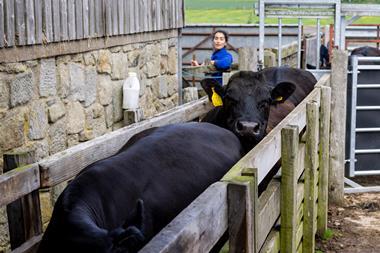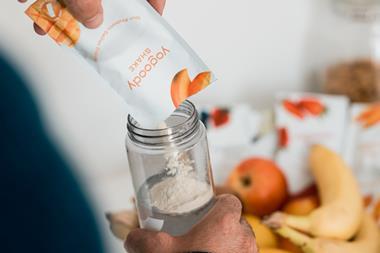
UK sales of organic dairy products have plummeted in recent years, new research has revealed, with the sector’s prospects for recovery and future viability now on a knife edge.
The sector had suffered through a “torrid period” since the height of the Covid pandemic, according to new report ‘Organic dairy – battered, bruised, but back on the up?’ co-authored by John Allen of Kite Consulting, Rob Daykin of the Daykin Partnership and agricultural journalist and market analyst Chris Walkland.
Soaring costs and unsustainable farmgate milk prices, combined with the cost of living crisis, had seen organic shoppers trade down or across to own label from organic brands, the report said.
The retail price premium for four pints of organic milk versus conventional milk increased from 53p in 2019 and 2020 to over 60p in 2023 and 2024, according to Kite’s analysis, and had weighed down on consumer demand.
This widening gap to cheaper conventional dairy products led to a 14% fall in organic milk sales volumes last year and a 16% drop in yoghurt sales across the major supermarkets [NIQ Homescan 52 w/e 9 September 2023]. The two categories account for 97% of the organic dairy market, the study reported.
Analysis of Assosia data by The Grocer reinforces the impact of inflation on consumer demand, with the number of organic milk SKUs sold across the major multiples and Ocado falling by 16.4% from 2022 to 2024.
And at the same time, milk production volumes in the organic sector had also fallen considerably, the report noted. Current volumes are now tracking 30% below those in 2020/21, with organic farmers often unable to cope with inflationary pressures “and several either quitting dairy farming altogether or reverting to conventional farming”.
Many leading processors and retailers “remain committed to what is an extremely important sector for the UK dairy industry”, Kite director Allen said.
Retail demand had also improved over the past year, with the report citing AHDB analysis showing growth across organic dairy this year, including an increase of 4% for organic milk sales in the 12-week period to 18 May.
However, the report also noted customer confidence was “fragile”, with the authors pointing to “question marks over whether long-term damage has been done, and whether organic might get back to where it was before” in terms of lost volumes.
The sector had some “fundamental structural issues that have to be faced, and which will undermine the sector if left unchecked – not least over seasonality of supply”.
Currently the organic milk market was faced with too much milk production in the peak months, and not enough in the trough months, they warned. This was important, especially when consumer demand for organic milk was relatively static.
And it could be “damaging for the sector if it fails to satisfy customer requirements”, with attempts to penalise over-production in a bid to balance supply potentially hugely unpopular with farmers – adding to the challenges of producing organic dairy.
Short-term options, should volumes fall short this autumn, included diverting organic milk from other destinations.
Certification bodies were therefore encouraged to be flexible in allowing the feeding of non-organic milk powders to calves ultimately destined for the conventional beef supply chain.
The report also considered the rise of regenerative agriculture, with key organic brands already developing regen milk pools.
“Organic farmers have farmed regeneratively for years, and therefore there is an opportunity here to address any reputational challenge regen has to organic dairy,” Allen suggested.
“We believe there is a real opportunity for a processor or processors to take the lead in this space, and drive the merits of organic dairy. This also lends itself to building a more positive narrative that the consumer can both understand and get behind,” he said.
“Embracing these opportunities will be key to deciding how far organic will climb, and to what degree the sector will return to its former glory.”



















1 Readers' comment